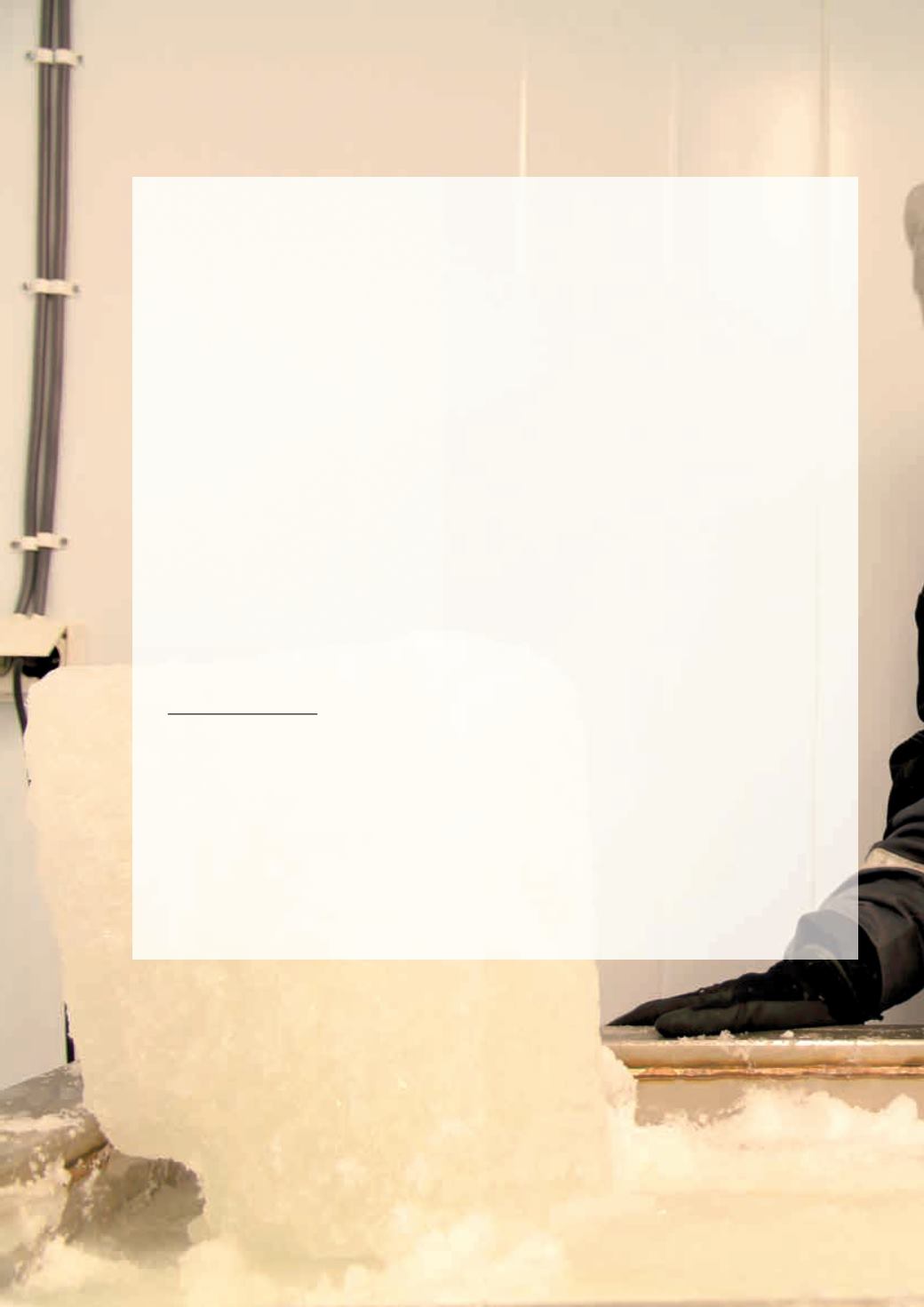

26
SAMC
o
T
• ANNUAL REPORT 2015
ANNA PUSTOGVAR
arrived in Longyearbyen on the Svalbard Archipelago in January 2011
as one of the many Russian students that choose the University Centre in Svalbard (UNIS)
to study Arctic Technology. She decided to follow courses during the spring semester
in the subjects of Frozen Ground Engineering and Ice Mechanics. Pustogvar so much
enjoyed the atmosphere and the courses at UNIS that she decided to stay one more
semester. Shortly after that, she came back to Longyearbyen to work as an assistant on
the fieldwork that Anton Kulyakhtin was carrying out as part of his PhD position at NTNU.
A few months later it was time for her to return to St. Petersburg where she received a
Master in Science. It was also there that she heard about her current PhD position from
Sergey Kulyakhtin, whom she knew from fieldwork. The subject was very interesting, and
already knowing Professors Løset, Høyland and a couple of other future colleagues from
her time in Longyearbyen, made the decision to apply for the position at SAMCoT an easy
one, and one she has not regretted.
Pustogvar’s research focusses on experimental work and analysis of data. In 2015 she
submitted her papers to the journal Cold Regions Science and Technology on an improved
method to measure ice density and on experimental and analytical modelling of ice
rubble porosity. She will work on virtual experiments on porosity of ice rubble as a
visiting researcher in early 2016, and on the submission of her third and last journal paper
in collaboration with Assistant Professor Polojärvi and Professor Tuhkuri. Pustogvar
recommends all new PhDs to use the opportunity to work in different locations as “it
helps to increase your productivity and gain new ideas,” she said.
Back in St. Petersburg she is currently working on finishing her thesis.
“Although it is quite
a stressful time, it is also very exciting to summarize the work which I have been doing for the
past three years,”
she explains.
And, in the future?“Who knows, I am interested in learning more about remote sensing of
ice. This field is intensively developing, however, monitoring of ice still has lots of potential
to be improved and I would like to contribute.”
Photo: Sergey Kulyakhtin
















